Discover the tallest Lighthouse on the Pacific Coast, Point Arena Lighthouse. From its dramatic survival of the 1906 earthquake to breathtaking views, Keeper’s Cottages & Studios you can stay in, a museum with a dazzling 1st Order Fresnel lens, and complete with details of shipwrecks, this iconic Mendocino Coast landmark blends history, adventure, and unforgettable coastal beauty.
Nestled on the rugged cliffs of Northern California’s Mendocino Coast, the Point Arena Lighthouse rises 115 feet into the sky, standing as both a marvel of engineering and a cherished symbol of resilience. It’s not only the tallest Lighthouse on the Pacific Coast but also the closest point on the U.S. mainland to Hawaii, making it a beacon of history, culture, and breathtaking coastal scenery.
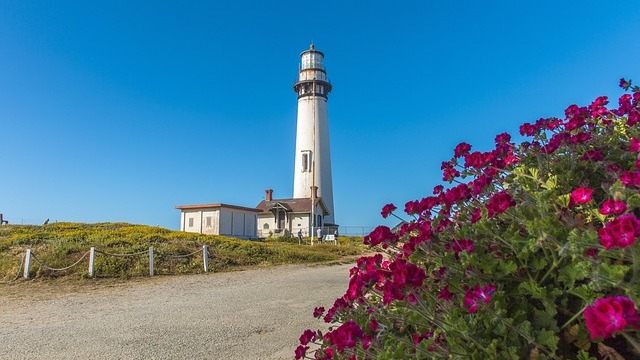
In a conversation with Mark Hancock, President and Executive Director of Point Arena Lighthouse Keepers, Inc., we explored the rich history, unique architecture, and ongoing preservation efforts of this iconic landmark.

What follows is a complete guide for travelers, history enthusiasts, and curious adventurers eager to experience one of California’s most fascinating coastal treasures.
What Makes Point Arena Lighthouse Special?
The Point Arena Lighthouse is more than a historical site, it’s a living, active aid to navigation. Installed in 1870, the Lighthouse's beam was visible to ships 21.5 miles out, but its visibility was limited by the earth's curvature rather than distance. Airplanes flying at higher altitudes can see the light from much farther away due to their elevated perspective.
Today, the U.S. Coast Guard maintains a modern VLB-44 LED beacon atop the tower which continues to be seen 21.5 miles out at sea, ensuring ships and mariners are still guided safely along the Mendocino Coast. Meanwhile, Point Arena Lighthouse Keepers, Inc. oversees the surrounding 23-acre property, including:
Seven Historic Vacation Cottages & Studios
These charming vacation rentals were once the homes of Lighthouse Keeper’s and their families, where generations lived and worked on the windswept bluffs. Today, they are carefully restored as vacation rentals, giving modern visitors the rare chance to “live like a Keeper” while enjoying ocean views and coastal serenity.
A museum
The museum brims with history; shipwreck relics, antique foghorns, and the original 1st Order Fresnel lens that once projected a beam 21.5 miles into the Pacific. Each display tells a story of how mariners braved dangerous waters with the Lighthouse as their guide.
An outdoor interpretive trail
The 23-acre grounds feature an Outdoor Museum with walking path lined with stone art installations and interpretive plaques. Strolling the trail, you can imagine the daily routines of Keeper’s while taking in sweeping views of cliffs, surf, and seabirds.
Arena Mina: The Famous Lighthouse Cat
Arena Mina was found abandoned at the Lighthouse nine years ago. Mark spent about ten days attempting to pick her up before she allowed it. Subsequently, she became known as Arena Mina, the Lighthouse cat, taking on roles as Guest Relations Manager and Rodent Control Specialist.
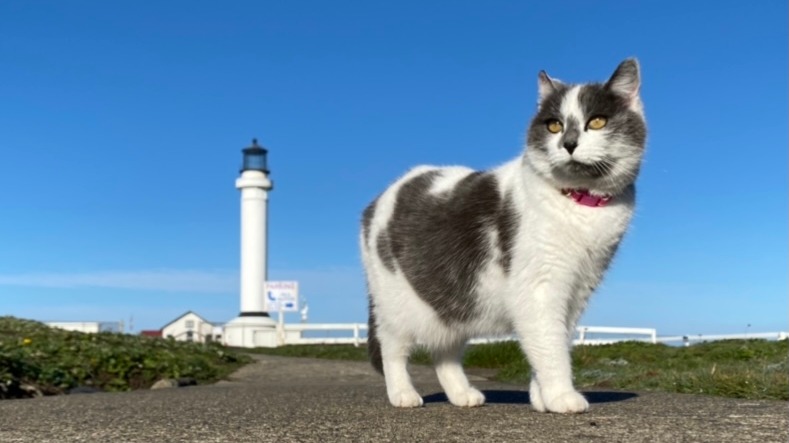
Currently, Arena Mina is a little rock star kitty. She is featured in two children’s books, postcards, stuffed animals, stickers, and has an Instagram page. A TikTok video a visitor made about her received 385,000 views, and visitors have come to the Lighthouse due to the video. People coming to the Lighthouse often go looking for the celebrity Arena Mina the Lighthouse cat.
The Light Station Store
More than just souvenirs, the store is considered one of the best in the region. Visitors often take home handcrafted art, local books, and maritime keepsakes. Every purchase supports the ongoing preservation of the Lighthouse, museums, and cottages.
This blend of modern function and preserved history makes Point Arena Lighthouse a rare attraction where visitors can step into the past while experiencing its present-day role.
A Storied Past: From Earthquake Ruins to a Reinforced Legacy
The 1870 original brick-and-mortar Lighthouse
The first Point Arena Lighthouse was completed in 1870. Constructed of brick and mortar with ornate ironwork and a stately Keeper’s residence, it stood as a proud symbol of progress. For decades, its beam cut through dense fog, guiding ships carrying lumber, fish, and goods along the treacherous Mendocino Coast.
1906 earthquake destruction
Disaster struck on April 18, 1906, when the powerful San Andreas Fault earthquake shook Northern California. The original tower cracked in four places but didn't collapse, likely due to the wrought iron circular staircase inside.
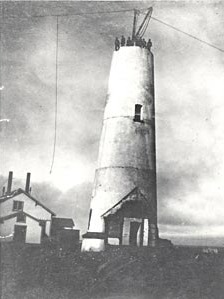
This damage left mariners without its critical beacon. The Lighthouse Service erected a temporary tower with a 3rd Order Fresnel lens that served to guide the ships carrying lumber to rebuild San Francisco until a new, permanent tower could be completed and lit.
1908 steel reinforced concrete rebuild
Determined to rise again, a chimney company in San Francisco was hired to build a new Lighthouse. The company utilized techniques from building reinforced factory chimneys and smokestacks to develop the new, earthquake-resistant design for the Lighthouse, incorporating steel reinforcement rods encased in concrete.
For lighthouse construction this was a revolutionary design using steel-reinforced concrete; a first in U.S. lighthouse construction. Completed in 1908, the new tower reached 115 feet and was built to withstand future earthquakes.
This decision to build the Lighthouse in this way not only saved the Lighthouse but also set a new standard in resilient design.
“It’s a symbol of resilience and innovation,” says Hancock. “The Point Arena Lighthouse was literally rebuilt from the ruins of one of California’s most devastating earthquakes.”
The original 144 step circular wrought iron staircase going up the tower was unharmed in the 1906 earthquake. It was reinstalled in the new Lighthouse. Take the tower tour and you will climb the original staircase to the top of the tower looking out at viewpoints in the tower as you climb the stairs.
As the new tower shone its light once more, the community found hope in knowing their beacon had returned, stronger and better than before.
Life as a Lighthouse Keeper: History Brought to Life
At the Point Arena Lighthouse, there was a Head Lighthouse Keeper and 3 Assistant Lighthouse Keepers. Some were married and had large families, and all Keepers lived on site.
Daily Keeper duties
For more than a century, Lighthouse Keeper’s lived demanding lives at Point Arena. Their duties included:
In the early days a steam whistle was used to warn ships in the fog. The Lighthouse Keeper’s had to procure, transport, cut, chop, and stack 150 cords of firewood each year to keep the steam boiler filled to sound off the whistles and later the fog horns.
Climbing 144 steps daily to maintain the massive Fresnel lens
Winding the heavy clockwork mechanism for 10 minutes every 75 minutes that rotated the light atop the Mercury Bath & Drive System
Keeping watch in all weather conditions, especially during dense fog and fierce coastal storms
Maintaining the property by hauling wood, pumping water, and keeping buildings in repair
Cleaning the 666 crown glass prism faces and polishing the bronze frame of the 1st Order Fresnel lens
Keeper’s often battled 70 mph winds and sheets of rain just to ensure the light never failed. “There were no fat Lighthouse Keeper’s,” Hancock jokes, pointing to the strenuous physical work required.
Keeper family housing (fourplex & Cottages)
The original Lighthouse included a large brick & mortar fourplex, where families lived under one roof, sharing chores, community and a single kitchen. After the 1908 rebuild, separate homes were constructed for each family; modest but sturdy residences perched above the crashing surf.
, these homes serve as vacation rentals, where visitors can sip coffee on the same porches where Keeper’s once watched the horizon for incoming ships. Staying overnight here offers an authentic connection to history.
The Lens That Lit the Coast: A 1st Order Fresnel
Fresnel lens design & power
At the heart of the Lighthouse was its 1st Order Fresnel lens, the largest type of lighthouse lens ever made. Standing nine feet tall by seven feet wide, its 666 catadioptric and dioptric crown glass prisms (all 666 had to constantly be cleaned of the soot produced by the oil lamp) bent and magnified light into a powerful beam visible for 21.5 miles.
Mercury flotation system
This massive lens weighs 4,700 pounds. To keep it rotating smoothly, it was floated on a bath of mercury, reducing friction. Though ingenious, this method carried dangers, and Keepers had to work carefully around the toxic metal.
Clockwork vs electric mechanism
Originally, the rotation was powered by a clockwork system that required Keeper’s to wind heavy counterweights every 75 minutes. Later, electricity took over, reducing labor and ensuring steadier operation. The rotation gives the Lighthouse its signature so ships at sea knew which lighthouse it was. The signature of the Point Arena Lighthouse is a single white flash of light every 15 seconds. The change to electricity marked the end of an era of constant manual vigilance.
Fresnel lens retirement and display
When the Lighthouse was automated in 1977, the 1st Order Fresnel lens was retired. Today, visitors can admire it in the museum, where its rainbow reflections still dazzle curious eyes.
From mercury baths to electric motors, the lens stands as a symbol of technological ingenuity and the relentless drive to keep the Pacific Coast safe.
Shipwrecks and Storms: Tales of the Sea Near Point Arena
For centuries, sailors have called this stretch of the Mendocino Coast the “Graveyard of the Pacific.” Hidden reefs, unpredictable fog, jagged coastline, and pounding surf made these waters treacherous.
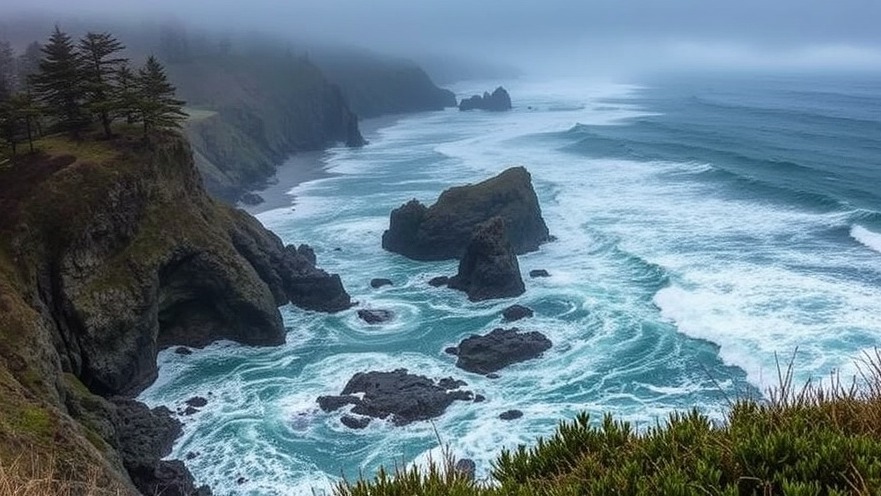
While Point Arena Lighthouse saved countless ships, it also stood as a silent witness to tragedies just offshore. The ocean here claimed dozens of vessels; some now lying in eerie silence beneath the waves.
Survivor’s Story: The Night the Pacific Enterprise Went Down (1949)
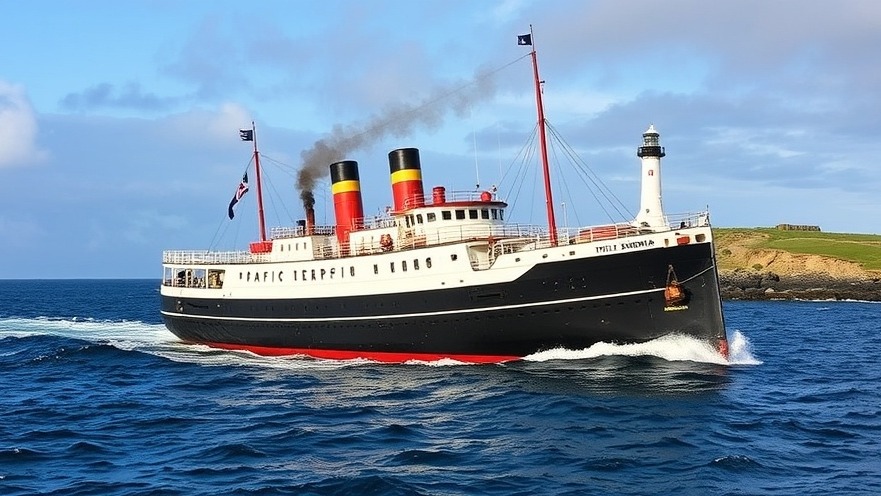
“The fog was so thick you could taste the salt in the air,” recalled one crewman. “We could hear the surf pounding the rocks long before we saw them. By the time the lookout shouted, it was too late. The ship lurched, groaned, and tore against the reef like a wounded animal.”
On that fateful night, the British tramp steamer Pacific Enterprise; laden with lumber, wheat, canned salmon, and ingots ran aground just a mile off Point Arena Lighthouse peninsula. Though the stern slipped beneath the waves, all aboard were rescued, thanks to lifeboats and the quick response of local fishermen.
For weeks, the wreck’s cargo washed ashore. Salvagers combed the beaches, recovering timber and supplies. Even today, divers occasionally find remnants of the vessel, twisted and barnacle-encrusted beneath the kelp forests.
A Keeper’s Lament: The Dorothy Wintermote (1938)
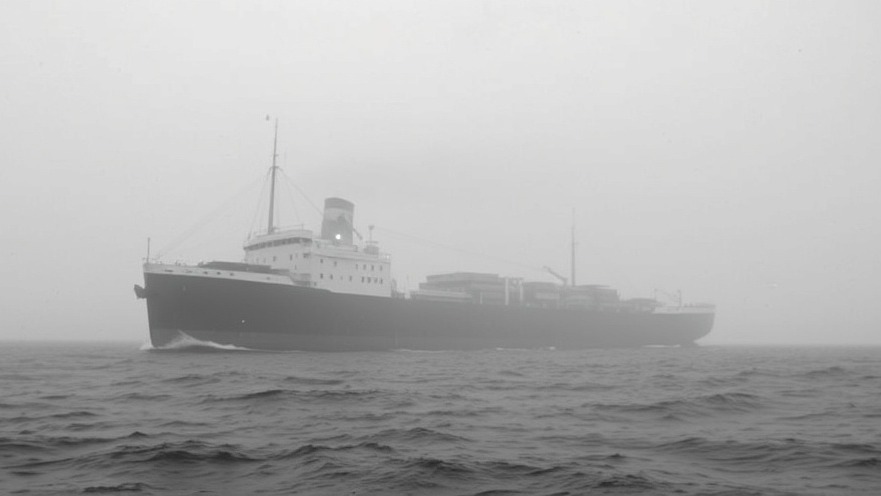
In December 1938, the cargo freighter Dorothy Wintermote struck a submerged rock and sank off Point Arena. From their watch room, Keeper’s could only see fog, their light beam unable to pierce the storm.
“We kept the light steady, but it could not save them,” one Keeper reportedly wrote in the station log. “When news came of the wreck, it felt as though the sea itself had swallowed the ship whole.”
Decades later, the wreck was rediscovered by Dr. Robert Ballard’s team, famed for finding the Titanic. Lying 261 feet underwater, the Dorothy Wintermote is now a ghostly reef of twisted steel, broken masts, and forgotten cargo jars, frozen in time beneath the Pacific.
Lost to the Fog: The Annie (1874)
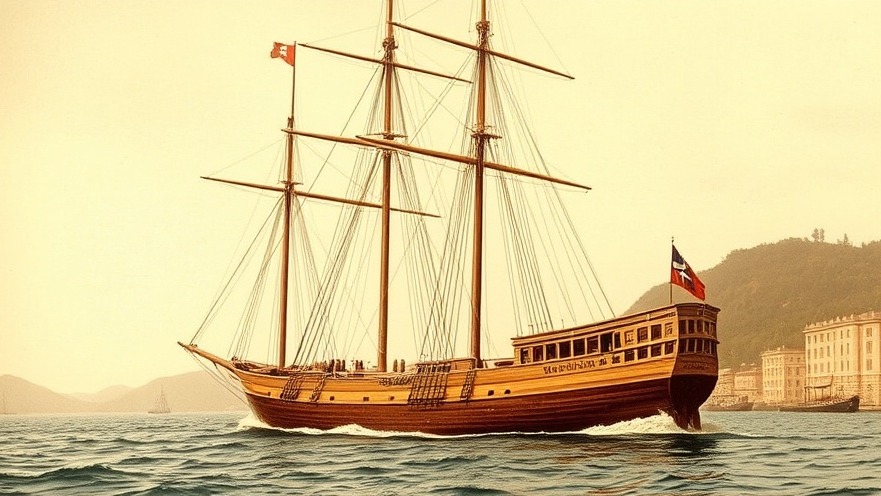
The lumber schooner Annie set sail in 1874, loaded with timber destined for San Francisco. Caught in sudden fog, she struck rocks near Point Arena and was torn apart by the relentless surf.
“The sea roared like cannon fire,” one survivor later told townsfolk. “We cut the rigging, but the surf ripped the ship to pieces. Clinging to planks, we drifted until dawn revealed the Lighthouse beam, too late to save our vessel.”
The Annie was one of many lumber schooners lost along this perilous stretch of coast, their wrecks feeding both legend and local lore.
⚓ Standing on the cliffs today, with the Lighthouse beam flashing rhythmically across the Pacific, it’s easy to imagine the desperation of sailors straining for that very light. Each shipwreck is a reminder of why Point Arena Lighthouse was, and still is, a beacon of hope on one of America’s most dangerous coasts.
The Lighthouse Today: Tourism, Preservation, and Community
Point Arena Lighthouse nearly closed in 1982, when the Coast Guard debated shuttering or selling the site. Instead, the community rallied to form Point Arena Lighthouse Keepers, Inc., a nonprofit dedicated to preservation. They leased the site in 1984 and were gifted it outright in 2000.
Today, the Lighthouse thrives thanks to:
Vacation rentals
Museum & Tower tours and Light Station Store sales
Memberships and donations from supporters worldwide
This nonprofit model ensures the Lighthouse remains accessible to the public while preserving its legacy for generations to come.
Visitor Experience: What to Do at Point Arena Lighthouse
A visit to Point Arena Lighthouse is both scenic and educational.
Climb the tower
Ascending the 144 steps to the top rewards visitors with panoramic views of the Mendocino Coast. On clear days, you may see migrating whales spouting offshore or fishing boats dotting the horizon.
Explore the museum
The Fog Signal Building Museum is packed with shipwreck stories, antique navigation tools, and the dazzling 1st Order Fresnel lens. It’s an intimate way to step into the shoes of those who once depended on the light.
Stay overnight in Cottages
Few experiences match sleeping in a former Keeper’s home, with the sound of waves crashing below and the tower illuminated just steps away. Guests often describe it as both humbling and magical.
Walk the grounds & art installations
The grounds invite leisurely exploration, from stone art to sweeping bluffs. Interpretive signs tell stories of the past, while benches encourage you to linger with the sea breeze.
Wildlife viewing
Bring binoculars; whales, sea lions, dolphins, harbor seals, and seabirds frequent the waters and cliffs around the Lighthouse. Birdwatchers often spot pelicans and cormorants soaring against the wind.
Nearby attractions include Arena Theater for live performances, Arena Cove Historic District, B Bryan Preserve with African hoof stock, zebras and giraffes, and local dining at places like The Record, Izakaya Gama and Pier Place.
Whether you’re climbing, exploring, or relaxing, the Point Arena Lighthouse offers something for every traveler.
Scenic Journey to Point Arena
Located along California Highway 1, the drive to Point Arena Lighthouse is an adventure in itself. The route offers breathtaking ocean views, winding coastal roads, and opportunities to stop at scenic overlooks.
Travelers from the Pacific Northwest, like Gig Harbor, Washington, experience a striking difference between California's rugged North Coast and the urban areas to the north. The road twists along dramatic cliffs, offering postcard-worthy views of the Pacific. The scenic drive itself, with winding roads and stunning Pacific views, is a key attraction.
Highlights along the way north from the San Francisco Bay area include:
Bodega Bay – famous for seafood and as the filming location of Hitchcock’s The Birds.
Fort Ross – a historic Russian settlement overlooking the coast.
Gualala – a quaint coastal town perfect for a rest stop.
For those traveling from places like Gig Harbor, Washington, the journey to Point Arena is as rewarding as the destination. "The north coast of California is very different," Mark points out.
Point Arena features exceptional landscapes and a distinctive coastal environment, providing a noteworthy alternative to metropolitan areas. Traveling along Highway 1 presents a visually appealing route, encouraging visitors to appreciate both the scenery and the overall experience.
Frequently Asked Questions People Also Ask
Q: How tall is Point Arena Lighthouse?
A: The Lighthouse stands 115 feet tall, making it the tallest Lighthouse on the U.S. Pacific Coast.
Q: When was Point Arena Lighthouse built?
A: The original tower was built in 1870. After the 1906 earthquake destroyed it, a new tower was completed in 1908.
Q: Were there shipwrecks near Point Arena Lighthouse?
A: Yes. The Mendocino Coast around Point Arena is known as part of the “Graveyard of the Pacific.” Dozens of ships were lost here due to fog, reefs, the jagged coastline and storms. Notable wrecks include the Pacific Enterprise (1949), which ran aground in heavy fog; the Dorothy Wintermote (1938), later explored by Robert Ballard’s team; and the lumber schooner Annie (1874). Many smaller schooners and fishing boats also met their fate near Arena Cove.
Q: Can you stay overnight at Point Arena Lighthouse?
A: Yes! Guests can rent one of seven historic cottages & studios that once housed Lighthouse Keeper’s and their families.
Q: What is inside the Lighthouse Museum?
A: The museum displays the original 1st Order Fresnel lens, shipwreck artifacts, historical photographs, and maritime tools.
Q: Is Point Arena Lighthouse still active?
A: Yes. Today, it uses a modern VLB-44 LED beacon maintained by the U.S. Coast Guard. Its light signature is a single white flash every 15 seconds.
Q: What movies featured the Lighthouse?
A: The Point Arena Lighthouse appears in films such as Forever Young (1992) and Need for Speed (2014).
Q: What’s the best time to visit?
A: Clear days between April and October offer the best visibility and whale-watching opportunities.
Plan Your Visit
Planning a trip to the Point Arena Lighthouse is easy, and rewarding. The site is open daily from 10 AM to 3:30 PM, (4:30 PM Memorial Day weekend through Labor Day), with guided tours, museum access, and the chance to climb all 144 steps to the top for unmatched coastal views.
Tickets are available at the entry kiosk, and tower climbs may vary depending on weather conditions. Reservations in advance are not required, just stop by the entry kiosk at the gate.
For a truly unforgettable experience, consider booking a night in one of the historic Keeper’s cottages or studios. Imagine waking up to the sound of waves crashing below, sipping coffee on a porch once used by Lighthouse families, and watching the beacon flash across the Pacific at night.
Guests often describe it as both magical and humbling; an experience that feels like stepping back in time while enjoying modern comfort.
Hours: Daily, 10 AM – 3:30 PM (4:30 PM Memorial Day weekend through Labor Day)
Tours: Guided tours available; tower climbs subject to weather conditions
Tickets: Available at the entry kiosk
Website: PointArenaLighthouse.com
👉 Learn more and reserve your stay at PointArenaLighthouse.com.
Email the Lighthouse: Info.PALight@gmail.com
Call the Lighthouse: 877-725-4448, ext. 1 or 707-882-2809, ext. 1
Discover the beauty and history awaiting you on the Mendocino coast.
Conclusion: A Call to Experience the Mendocino Coast’s Beacon
The Point Arena Lighthouse is not just a stop on a travel itinerary, it’s a journey through history, technology, and coastal culture. Whether you’re climbing its 115-foot tower, sleeping in a former Keeper’s home, or simply standing on the bluffs watching the Pacific crash against the cliffs, this landmark offers an experience that resonates deeply with visitors.
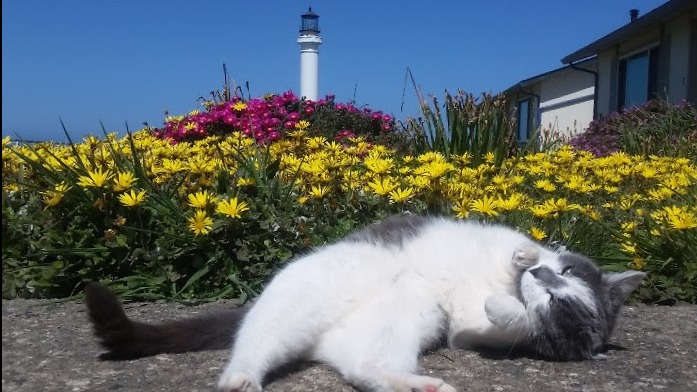
For history buffs, nature lovers, and curious travelers, Point Arena Lighthouse is a shining reminder of resilience, innovation, and community spirit on California’s coast.
 Add Row
Add Row  Add
Add 


Write A Comment